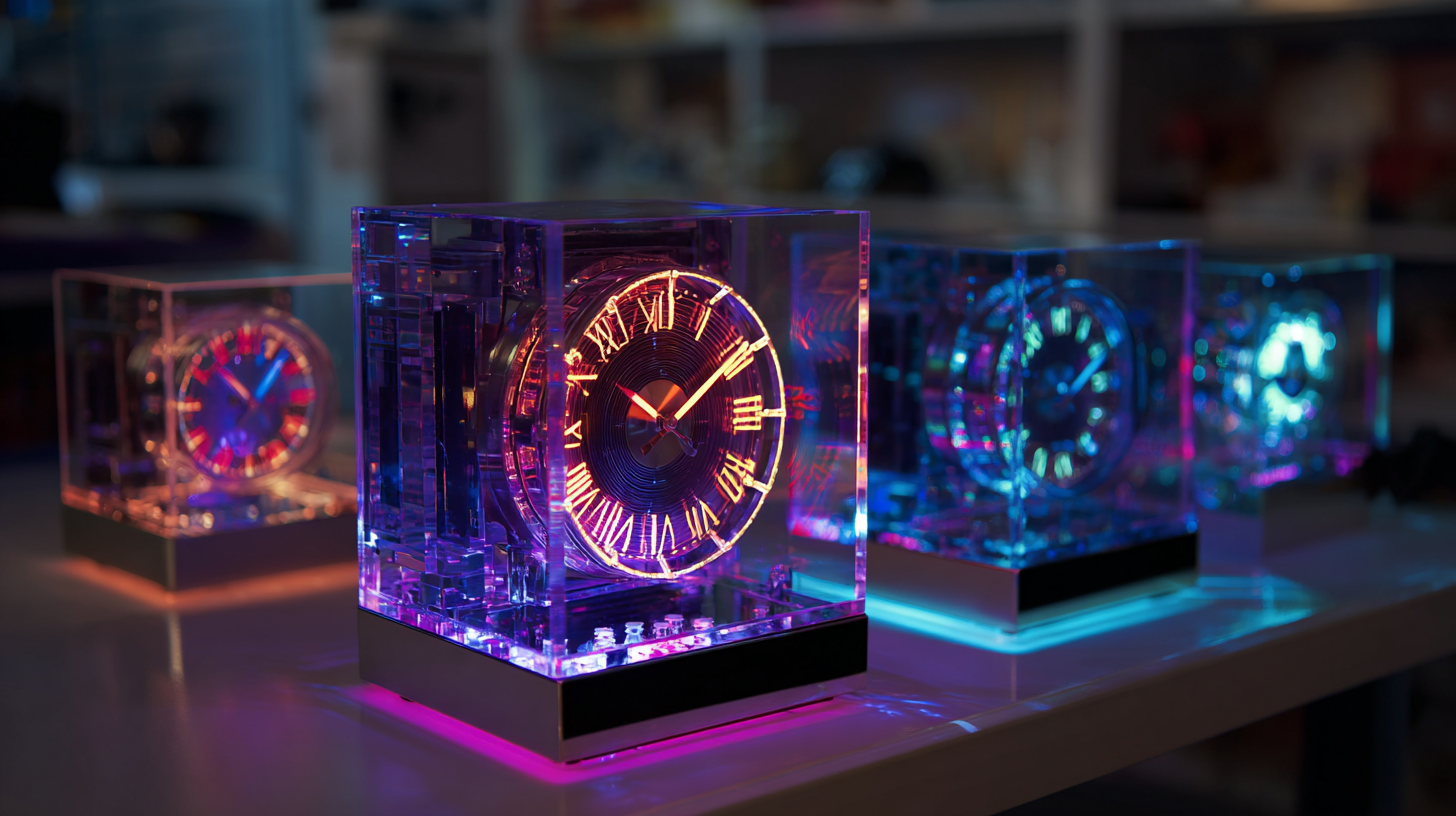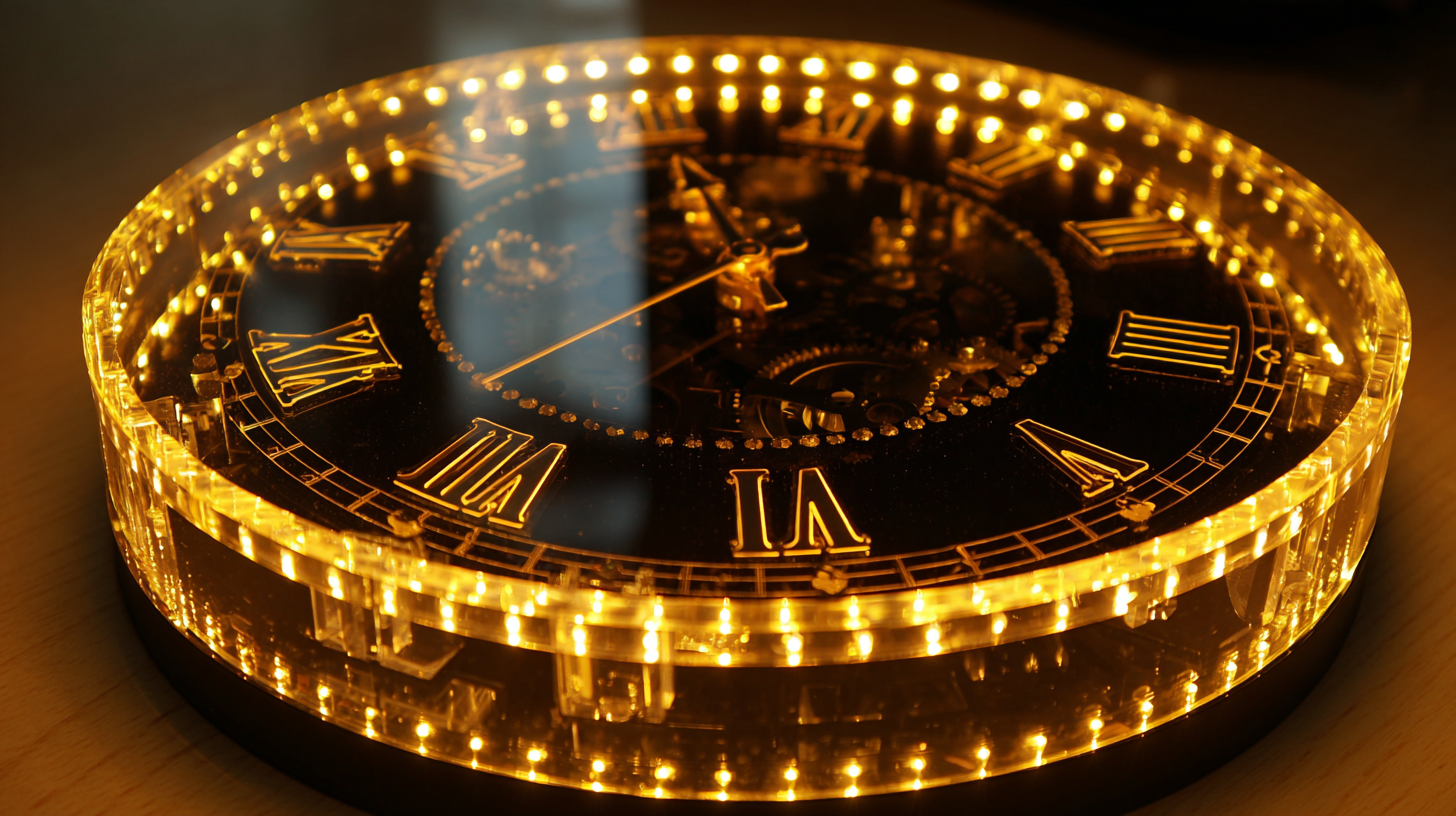In today's fast-paced world, LED clocks have emerged as essential companions in homes and workplaces, delivering not only timekeeping but also style and functionality. According to a recent report from the Global Industry Analysts, the global clock market is projected to reach USD 9.4 billion by 2026, with LED clocks gaining significant traction due to their energy efficiency and durability. As consumers become increasingly discerning, understanding global manufacturing standards for LED clocks becomes imperative to ensure quality, reliability, and compliance with safety regulations. This ultimate guide aims to delve into the various standards that govern the manufacturing of LED clocks worldwide, helping consumers make informed decisions while investing in this innovative product. Whether you're a manufacturer, retailer, or consumer, grasping these standards will empower you to choose the best LED clock available in the market today.

Understanding Global Manufacturing Standards for the Best LED Clock in the Market
In the competitive market of LED clocks, adherence to global manufacturing standards is paramount for ensuring quality and performance. These standards, such as ISO 9001, provide a framework for organizations to enhance customer satisfaction and achieve consistent quality in their products. Recent developments highlight the significance of integrating standardized practices across industries. For instance, the establishment of a world-class salt lake industry standard system showcases how regional governments are prioritizing quality assurance through systematic planning and execution.
**Tips:** When selecting an LED clock, pay attention to certifications that indicate compliance with international quality standards. Look for products that have undergone rigorous testing and quality assurance processes, ensuring durability and accuracy.
Moreover, as highlighted by the principles laid out in the Carnegie International Peace Foundation's report on ICT supply chain integrity, organizations must ensure that their manufacturing processes are not only efficient but also transparent. This reliance on integrity helps in building consumer trust, which is invaluable in today's market landscape.
**Tips:** Research the manufacturers' transparency and their adherence to international standards when purchasing an LED clock. Engaging with brands that publicly share their quality assurance metrics can lead you to better overall value.
| Specification | Standard | Compliance | Testing Method | Remarks |
|---|---|---|---|---|
| Power Consumption | IEC 62301 | Compliant | Energy Meter Testing | Low consumption for energy efficiency |
| Safety Standards | UL 60950 | Compliant | Electrical Safety Testing | Ensures user safety |
| Light Output | IES LM-79 | Compliant | Photometric Testing | Verifies brightness performance |
| Durability | ISO 9001 | Compliant | Life Cycle Testing | Long-lasting performance assurance |
| Environmental Compliance | RoHS | Compliant | Material Safety Testing | Non-toxic materials used |
The evolution of LED clock technology has been marked by significant innovations that have transformed how we perceive and interact with time. Initially, LED clocks were simple devices displaying only the time in basic red or green digits, often lacking in features and design. However, advancements in technology have introduced a plethora of functionalities and aesthetic variations, catering to a wider audience and enhancing user experience. Today, many LED clocks come equipped with features such as ambient light sensors, wireless charging capabilities, and even integration with smart home systems.

Moreover, manufacturers have started focusing on energy efficiency and sustainability in their designs. Modern LED clocks utilize low-energy consumption LEDs and recyclable materials, aligning with global manufacturing standards aimed at reducing environmental impact. Innovations also extend to the design aspect, with sleek, minimalist styles and customizable displays that allow users to choose colors and patterns, making them not just timekeepers but also stylish decor pieces. As technology continues to advance, we can expect even more groundbreaking features that will redefine how LED clocks fit into our daily lives, reinforcing our connection to both time and technology.
The role of Chinese factories in the global manufacturing landscape cannot be overstated, particularly when it comes to producing high-quality LED clocks. As a powerhouse of manufacturing, China has established itself as a critical player, supplying a significant portion of the world's consumer electronics. The combination of advanced production techniques, cost-effective labor, and robust supply chains enables Chinese factories to meet the increasing demand for innovative and reliable LED clocks, setting a precedent for quality standards across the globe.
Chinese manufacturers are continually adapting to meet international standards, ensuring that their products comply with safety and environmental regulations while incorporating cutting-edge technology. This adaptability has allowed them to thrive in a competitive market, as they focus on both efficiency and quality. Furthermore, partnerships between Chinese factories and international brands often lead to collaborative efforts that elevate manufacturing practices, resulting in superior products that resonate well with consumers.
As the demand for LED clocks continues to rise, the influence of Chinese manufacturing on global standards will likely grow, shaping the future of this industry.
When it comes to purchasing a LED clock, consumer confidence hinges heavily on manufacturing standards. These standards act as a benchmark, ensuring that products meet specific quality and safety requirements. For manufacturers, adhering to globally recognized standards not only enhances the trustworthiness of their products but also assures customers of their reliability. For consumers, choosing a LED clock that aligns with these standards results in better performance, longevity, and overall satisfaction.
**Tip:** Before making a purchase, always check for certifications that indicate compliance with international manufacturing standards. This can give you peace of mind knowing that the product has undergone rigorous testing.
Moreover, transparent manufacturing processes play a crucial role in shaping consumer trust. Companies that openly share their adherence to quality standards are more likely to attract discerning buyers. This transparency reassures consumers that they are investing in a durable and dependable product.
**Tip:** Look for brands that provide detailed information about their manufacturing processes and standards. This can be an excellent indicator of both quality and authenticity.
In the realm of LED clock production, maintaining high-quality standards is paramount. According to a report by MarketsandMarkets, the global smart clock market is projected to reach $2.2 billion by 2025, driven by the increasing demand for smart home solutions and enhanced functionalities. To compete effectively in this growing market, manufacturers must adopt stringent quality control measures throughout their production processes.

Best practices for ensuring quality include implementing international manufacturing standards such as ISO 9001, which focuses on meeting customer expectations and delivering satisfaction consistently. Furthermore, regular training for production staff on the latest technologies and production techniques can significantly reduce defects. A study published by the International Journal of Advanced Manufacturing Technology indicates that organizations that invest in employee training see a 30% reduction in product failure rates. By embracing these approaches, manufacturers can not only elevate the quality of their LED clocks but also bolster their position in a highly competitive marketplace.